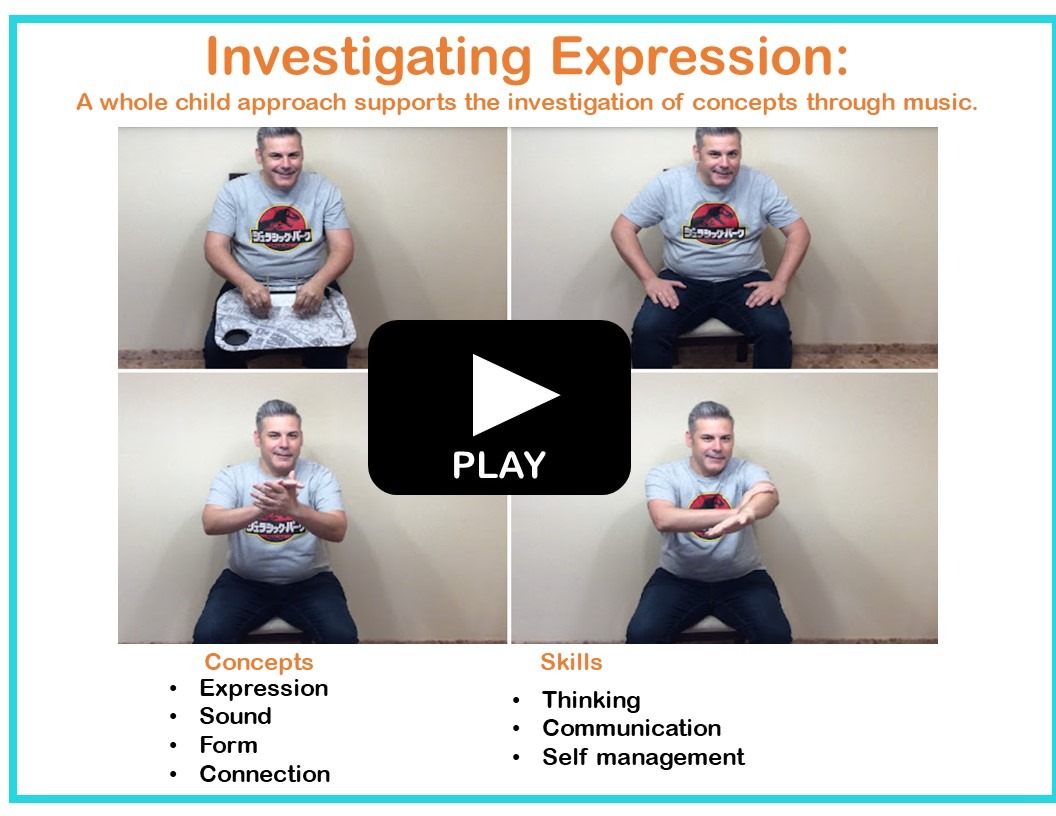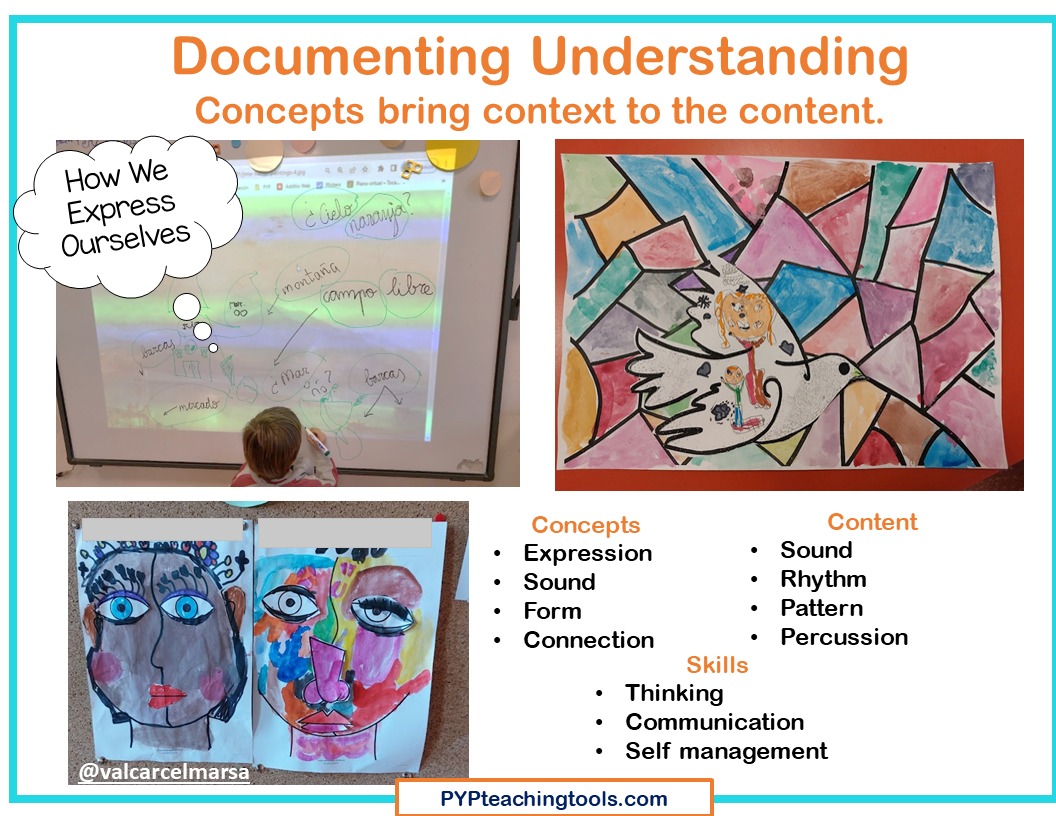A Transdisciplinary Approach to the Arts in the IB PYP

Dear IB PYP teachers, allow me to introduce Sven Valcárcel Marsà, IB PYP teacher and music teacher in Agora Lledó International School inSpain, as my guest writer for this article. I met Sven through Instagram @valcarcelmarsa after he reached out to share his strategies for approaching the arts through a transdisciplinary approach. The PYP Scope and Sequence document for music defines the body of knowledge music students need. It is differentiated based on the students’ abilities and situations, progressively builds upon their conceptual understanding and skills which means, as with everything in the PYP, is approached as a transdisciplinary learning experience, through the concepts within our themes.
In Phase 1, students “…explore sound as a means of expressing imaginative ideas.”
Phase 4, students will “…write music in traditional notation…create music that will be refined after sharing with others.” (IBO, 2018, p.22)
Single subjects dont receive as much attention and Sven wanted to ensure that this all-important group were supported.
As you read through Sven’s article, conside r how his process relates to a transdisciplinary, inquiry approach, no matter the subject, bringing forth the whole child as we integrate the elements of the IB PYP.
r how his process relates to a transdisciplinary, inquiry approach, no matter the subject, bringing forth the whole child as we integrate the elements of the IB PYP.
Bringing You the Arts Specialists We often listen to that typical phrase: “only musicians can teach music”, and it’s partly right, you need to have musical notions to be able to teach music well to others but this is not something impossible, nor do you need to have a gift, nor does it require a lot of learning time. From my point of view, it requires 3 ingredients: a desire to learn, someone to guide you well and a little love.
This blog entry shares my most recent experience in music education with 5-year-old students, in which it was suggested that music specialists propose a series of activities that end up making the soundtrack of a painting. This was a part of the unit "How We Express Ourselves". In the past, the arts teachers had previously taken the more common route with a trip to the city museum to see a large exhibition of local visual artists, followed by having students create ther own version of masterpieces, such as a self-portrait by Fridah Kahlo. They had also created a small library with books and stories brought from home by the students with different artistic proposals. All very valuable and noble actions. However, this time we were going to step into the realm of risk-takers, with more integration of all of the arts and greater voice through the children's perception of expression.
Guiding Agency with Young Students
When students are exposed to those big ideas, through authentic application, they construct meaning that can be very personal to them. The next step should then be authentic action – steps taken based on what they have learned. Students should feel so inspired by what they’ve learned that they feel compelled to take action. With our younger students, we can present options to support their thinking, ensuring they understand the concepts to be demonstrated. Of course, we allow room for their creativity, particularly through the concept of expression and, bringing integrity to the creative arts. Thus, I designed a series of learning experiences to reach a new outcome:
Create a completely original soundtrack with body sounds and sounds with some daily phones sounds based on the students' own work, choosing 3 different and complex themes such as: A self-portrait, an alphabet or a dove of peace
Possible Lines of Inquiry:
- Sound enhances the visual experience
- Self expression has many forms
- Our body as a source of expression
- Feelings influence expression
Tuning into the Inquiry:
Previously, the students had done their provocation related to the art subject, going to a museum and carrying out a series of provocative activities for pre-assessment, making connections with prior knowledge and inviting curiosity. The usual essential questions and teacher supports were included to guide the process of investigation and introduce the related concepts and key vocabulary:
- What is the art? Ask students what prior knowledge they have about this concept at a general and specific level regarding each artistic discipline.
- Propose to the students, after visiting the museum, that they try to explain with their words what art is, connecting with the concepts of "artist" and artistic disciplines.
- Guide the students' proposal through their own artistic tastes towards the vocabulary that defines each artistic discipline and the way in which each one is produced: Painter-painter, Dancer-dance, Musician-Music, Sculptor-Sculpture, etc. …
- -Go writing down each of the terms on the board to have an artistic brainstorm.

Investigation Through Concepts: -How body percussion works to produce sounds In the following learning activities, the children experienced how we connected the form of the body and the function of sound in relation to expressing ourselves.  This session is completely instrumental. It is about showing students the possibilities of body percussion, without the need for vocal or instrumental action. Proposal 1: We sit in a circle and the teacher proposes different actions such as: Rubbing (lower, upper extremities and body)
This session is completely instrumental. It is about showing students the possibilities of body percussion, without the need for vocal or instrumental action. Proposal 1: We sit in a circle and the teacher proposes different actions such as: Rubbing (lower, upper extremities and body)
- Clapping (lower and upper extremities and body)
- Alternate this with silence and with artistic movements
- Percussion on the ground with indeterminate rhythms
Variation 1: Conductor's game. Each student can now make their proposal and all the rest of us imitate him. Variation 2: Spy game. One student stands up and turns his back to the group, on the other side of the class. We all choose a student who will be the conductor of the orchestra. The student who has withdrawn from the group has to guess who has been chosen. Proposal 2: (See video above) We sit in a circle again. On this occasion, the teacher proposes a 4-beat rhythmic pattern, with clapping, and the students have to repeat it. Once 6-8 examples have been made, change the timbres (thighs, chest, head...) and combine them with each other. Variation 1: Chinese chopsticks. Carry out proposal 1 with chopsticks, that is, with indeterminate rhythms, seeking to create different sound environments. Once all the sound possibilities have been discovered, introduce proposal 2.
The Process and the Product:
Following the inquiry process, the children were able to demonstrate their understanding of the music concepts in relation to the unit concepts, presenting their own creations of expression through visual art accompanied with their body percussion.  If you are a teacher of the arts, or just looking for more input with a transdisciplinary approach with the arts and single subjects, you can reach out to Sven through Facebook and on his websites below.
If you are a teacher of the arts, or just looking for more input with a transdisciplinary approach with the arts and single subjects, you can reach out to Sven through Facebook and on his websites below.
- INICIO | svenvalcarcel (svenviolin.wixsite.com)
- Home | S V E N v. m. (svenviolin.wixsite.com)
- Via Linked in
Enjoy!

P.S. If you'd like more ideas for integrating the ATL skills authentically, take a look at the following articles.

